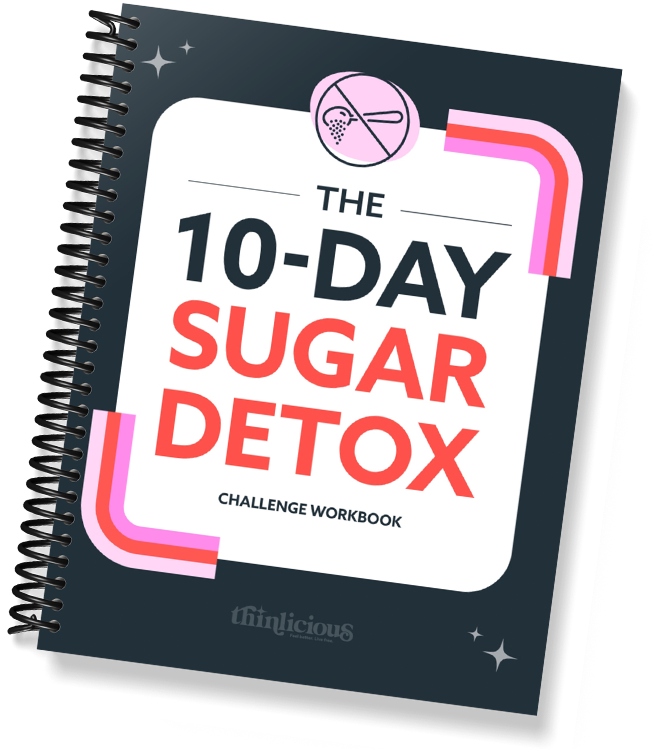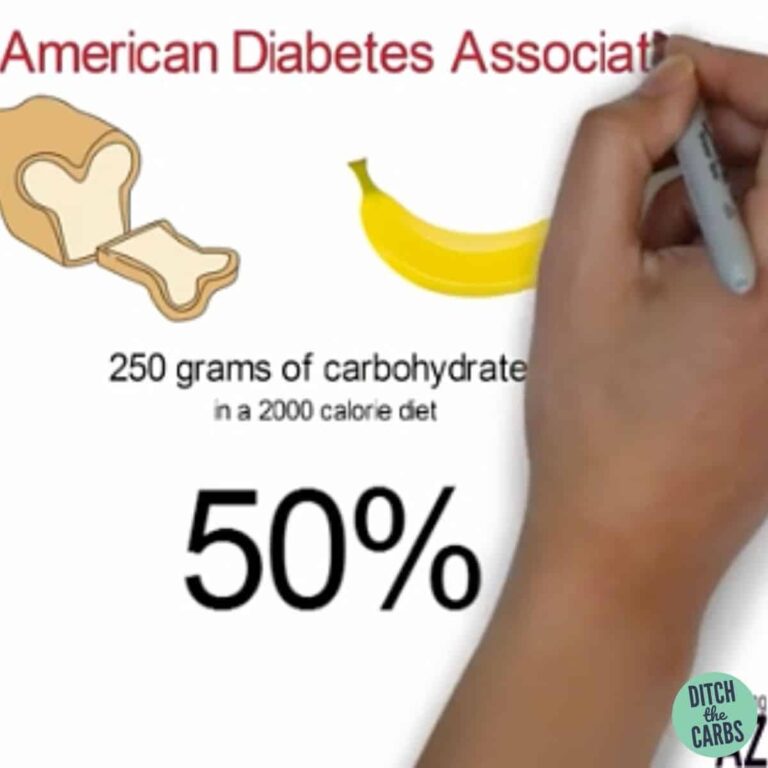Ruth Soukup: If you’ve ever felt like your body is falling apart for no reason and no doctor seems to know why this is one episode, you can’t miss. Because what if the real problem isn’t you? It’s your environment. Things like hidden mold, heavy metals, or even parasites could be silently wrecking your health and chances are your doctor isn’t even looking for them.
Today we’re chatting with Doctor Neil Nathan, a board certified family physician with over. 50 years of experience treating some of the most complex, misunderstood chronic illnesses out there, including things like mold toxicity, Lyme disease, and chronic fatigue.
He’s the author of several powerful books, including Toxic and Healing is Possible, and he’s especially passionate about helping patients who’ve been told there’s nothing more that can be done. By getting to the real root causes of what’s going wrong in the body, and today’s conversation is eye-opening.
We dive deep into how environmental toxins like mold, heavy metals, and even parasites can impact your energy, your hormones, your brain, and why just detoxing? Isn’t nearly enough. If you’ve been struggling with mystery symptoms or feel like no one’s listening to you, this is going to be a total game changer.
Are you ready to lose weight and heal your body for life (without dieting, drugs, or making yourself miserable)?
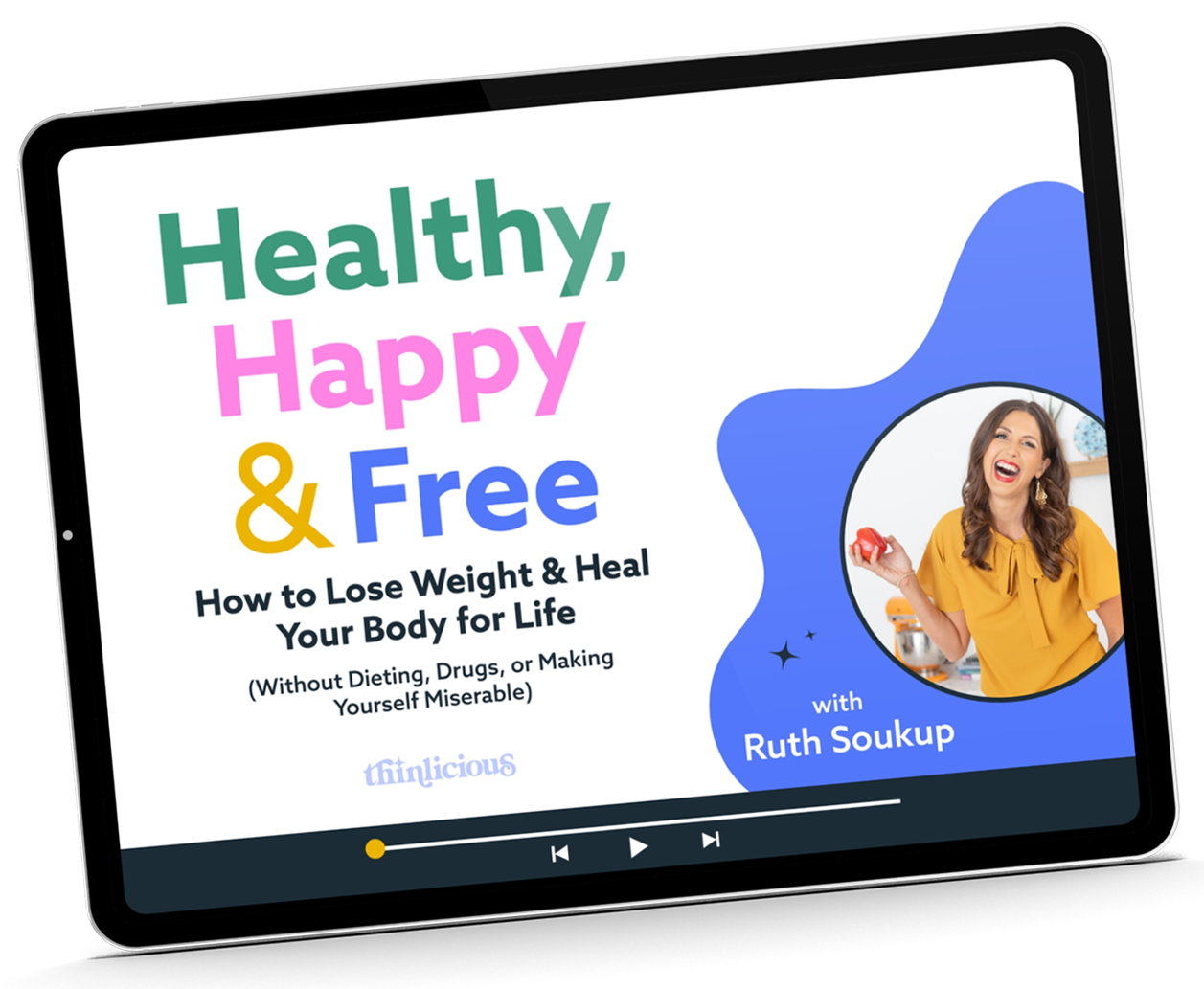
Our free on-demand video training will walk you through how to make this THE year you set health goals…and keep them.
I can’t wait for you to hear this conversation, so let’s get right into it. Neil, thank you so much for being on the podcast with me. I’m so excited to dive in with you today.
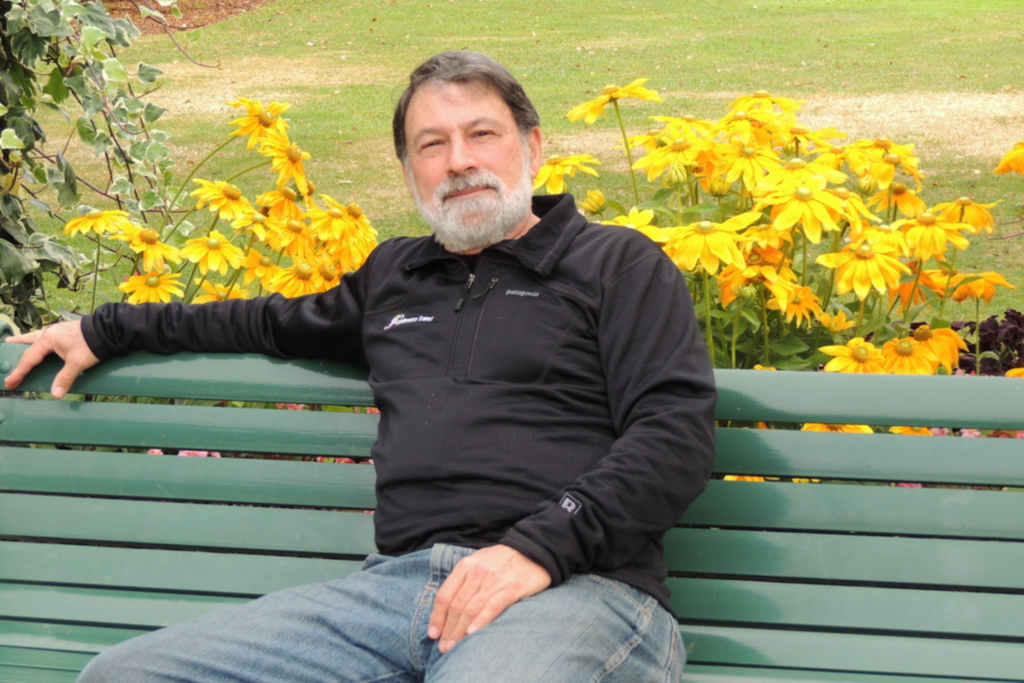
Dr. Neil Nathan: Right. Thanks for having me.
Ruth Soukup: Yeah. So let’s just start kind of with the background. I’d love to know just your history of who you are, what you do, and how you got to be doing what you are now.
Dr. Neil Nathan: Um, how much time do you have?
Ruth Soukup: I know you’ve been doing this a long time.
Dr. Neil Nathan: Okay, so I went to medical school with the mistaken. Impression that I would learn how to be a healer. That’s what I wanted to do, and I was kind of surprised and disappointed that that’s not what they were gonna teach me in medical school.
They were gonna teach me to be what I will call a medical technician. So what I wanted to learn. I learned a bit of, and I got my credentials. So I’m a board certified, um, md, um, and I’ve been, um, an expert in what’s called pain management, integrative holistic medicine, as well as family practice, which I, I’ve done.
And my interest has always been in helping people that other people didn’t know how to help again. Uh, probably a little bit odd in that re in that regard, but, um, so my colleagues from a very early time, and I’ve been doing this for over 50 years, my colleagues, um. Would refer their difficult patients to me so that I could try to figure out what, what did they miss?
What could they have that we could diagnose and treat successfully? Um, and so that’s been my theme, uh, throughout my life. Um. So I’ve studied a lot of things that other doctors haven’t studied, and honestly, I’ve helped a lot of people because I’ve been willing to, if you will, play medical detective and dig into things that other people, uh, weren’t even aware of.
So at this point, my practice has evolved to the point that, again, um, other physicians, uh, will consult with me about their most complicated and difficult patients, and I’ll try to tease apart. From the testing that they’ve had and what they’ve done, uh, what are we missing? What does this person have, what have they been exposed to that maybe you haven’t thought about?
And so I treat a lot of, um, mold toxicity, Lyme disease, autism, um, a lot of pain problems that pain specialists haven’t quite figured out. Um, that’s kind of what I do.
Ruth Soukup: It’s so interesting and it’s so, uh, it’s so interesting to me how few doctors in this day and age are willing to like really dig in and do the research.
Do you find that you work primarily with more functional health doctors or are you working with kind of doctors all across the board who are asking these questions?
Dr. Neil Nathan: Well, most functional or integrative doctors are more aware of what I do, so they’re much more, um. On how I could help them. I would say that most conventional doctors have no idea what I do and wouldn’t seek me because they have no idea about information that they’re, um, absolutely not on their radar.
Right.
Ruth Soukup: Yeah, it’s, which is really sad, a sad state. Um, but we won’t go in that, and we won’t go into that today because that would be a whole other, whole other episode. A lot of. Patients and clients who are just kind of at the end of their rope, then if they feel like they’ve been seeing a doctor even go diving in with a functional health doctor who typically will go much deeper with you than a regular doctor and you’re, they’re still not finding answers.
And what is that like? I mean, is it, i, is it, there must be just so much emotion that comes from working with clients who, who feel like they have tried everything in or at the end of their rope.
Dr. Neil Nathan: Yeah, these are people who just don’t feel like anyone’s really listened to them. Um, most of them have been written off by multiple physicians or healthcare providers, and, um, they’ve been told, this has gotta be in your head because you’re too complicated.
Um, and they know. Intuitively that no, there’s something really wrong with me and you all haven’t figured it out yet. So most people have nowadays. In the early days this didn’t happen. But since I’ve written a whole bunch of books, a lot of people find me through my books where they went, you know, you, I think you understand where I’m coming from and I think you understand what my journey has been like.
Um, so that most people come to me with a sense of at least hope. That. Okay. Maybe you will figure this out and help me get well, and I think I bring that to the table. I think because I’ve helped thousands of people, I. Over the years, I come to the table with the idea that together we will figure this out.
We will, I will go over your information in more detail than other people have, and there’s gonna be an answer in here. We just have to know what to look for. So, although people do come to me frustrated, kind of giving up sometimes on the medical profession, um, they’ve had. Thousands of dollars of testing that hasn’t given them an answer.
Most people come to me with the sense of, I, I think you can help me. I think you can figure this out. So yes, they’re gun shy, but there’s always hope in there that we can make this happen.
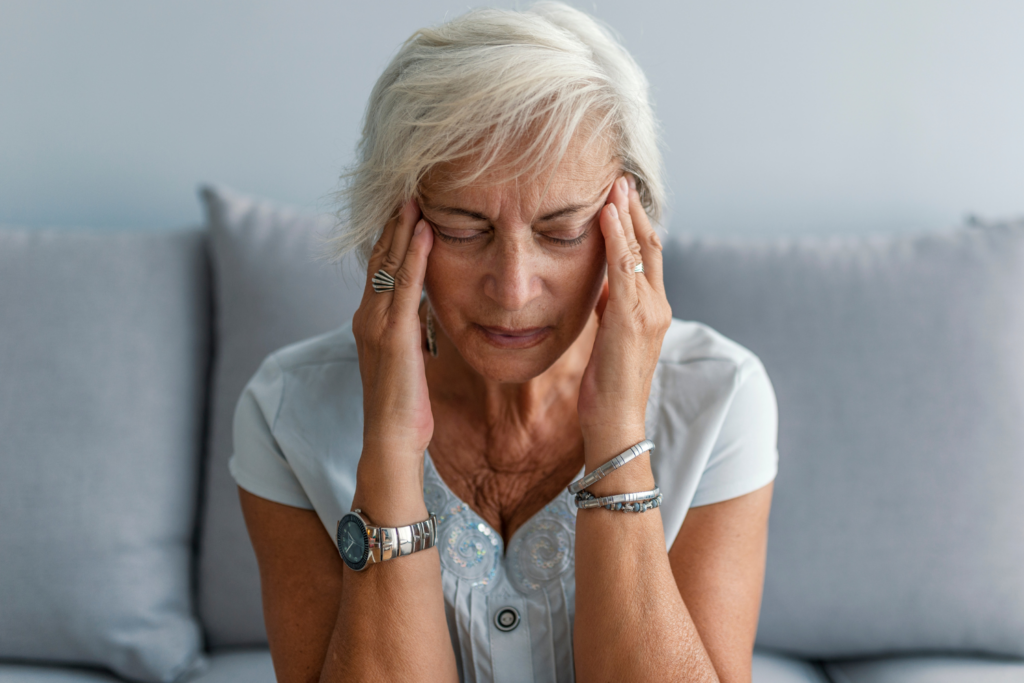
Ruth Soukup: Yeah. So where do you, where do you typically start then? Do you typically have an idea just when they come to you of what, what symptoms are mold related and, uh, or toxin related?
Like how do you, do you immediately kind of know, or is there things that you’ve just seen so many times over and over again? Like where, where do you begin?
Dr. Neil Nathan: A little of both. So, um, I mean, having done this for a very long time. There are certain patterns that I’ve learned or ways in which, uh, patients describe what’s going on that immediately light up.
Ah, we haven’t looked at this yet, or we haven’t looked at this yet. Um, if you will, you could call it pattern recognition of just having, having seen thousands of people with mold toxicity and Lyme disease and you name it. Um, there’s a. I, I don’t think patients are aware that there’s a pretty common thread through all of those, that if you are aware of what the condition is, it lights up immediately.
For example, there are certain symptoms that, um. Mold or lime or, and there’s nothing else. Example. Um, some people will describe the perception that they have an internal vibration going on in their body. It’s not visible. They’re not, they’re not tremoring, they’re not shaking, but they feel this internal vibration now that’s always mold toxicity or a co-infection of Lyme disease called bartonella.
Interesting. Um, other people will describe electrical pains or electrical sensations or an ice pick like pain, and that’s mold toxicity until proven otherwise. And, uh. On another plane, if someone has been a pretty solid citizen all their life and kind of out of the blue, they’ve become anxious or depressed or have OCD, or they have a feeling like they’re not themselves anymore, which we call derealization or depersonalization, that’s again, mold or lime as examples.
So there’s. The story that the individual gives me contains within it, the seeds for figuring it out. Um, and it’s just about having the experience of having seen. This ’cause the patients will go well, no one’s ever had anything like what I have. A lot of my patients think, yeah. Oh, I’m so special. You have never seen anything like this.
Ruth Soukup: Yeah.
Dr. Neil Nathan: And I’m usually smiling when I hear that and going, you have no idea. I’ve
Ruth Soukup: seen, I’ve seen it all. I’ve seen,
Dr. Neil Nathan: I don’t know that I’ve seen it all, but I’ve seen it hundreds and hundreds and hundreds of times. That what you’re describing and, and you’re not alone. You just haven’t gone to see someone who, um, had what I’ll call this pattern recognition.
Ruth Soukup: Right. Right. So what, it’s interesting to me though, that you’re talking so much about Lyme disease and mold toxicity having similar symptoms because. I mean, and clearly I’m not an expert in, in either of these things, but as I understood it, Lyme disease, it comes from ticks. Is that not, not correct? Yeah.
And, but they’re, but they have similar responses in the body, or how does that work?
Dr. Neil Nathan: So, so Lyme disease is a bacterial infection. Oh. And mold toxicity is a toxin. And so you might say, why would they look so similar? Symptomatically? Um, and I’m gonna throw in that long haul. COVID has similar symptoms to all of this and okay.
Ing, and that’s a virus. So you have these different. Causes creating very, very similar pictures, and the answer is a real simple one. All three conditions. Force the immune system to make what are called inflammatory cytokines to fight that condition. And the pattern of those cytokines is very, very similar.
So all three. Have the same cause. Even though you might say that the immediate effect is lost, they’re different. But really what they’re all being triggered by and caused by is the same. And so we need to understand the whole concept of inflammatory cytokines because that’s where almost all chronic illness comes from.
And we’re just learning that now.
Ruth Soukup: Yeah. Interesting. So, well, let’s start with, with mold. Why is like, why is the mold exposure such a big deal? Like, where is this coming from? Why, how is this not like, is this a super common thing? Do people know how to fight against it? Did, how do you know that you’ve been exposed to mold and how, how do you avoid that?
Dr. Neil Nathan: Okay. Um. So first of all, mold toxicity is far more common than people realize. Yeah. It’s estimated that there are 10 million Americans who have mold toxicity right now, and most of them have no idea. Okay. Second, most homes. Not most, a large percentage of homes in this country have mold in them to which people are being exposed.
Studies done by the federal government have shown that 47% of the homes in this country have visible or smell mold somewhere in their, to which people are being exposed. So what we’re saying is, this is not rare, this is not, but it’s. It’s still not known despite what I’m giving you. Um, the majority of physicians, this has not crossed their radar as something they need to be aware of, and so again.
If your immune system is robust, you can fight it off. You can be in a moldy environment. You can do okay and be, but if your immune system takes a hit, now that hit could be childbirth, menopause, a severe infection surgery, an emotional trauma loss of a loved one, whatever gets the immune system to take a hit, and all of a sudden it loses containment and now.
The toxins, which are already in the body, and now they’re running rampant and will do all kinds of things to the body. So it would help your listeners to know that mold toxicity can cause symptoms of virtually everything you can think of because these inflammatory, uh, cytokines are systemic. They will go to whatever a person’s weakest area is so that, um, they could be respiratory symptoms that could be causing, um.
An asthma like condition and shortness of breath, chest pain, they can cause a lot of cognitive impairment, brain fog, focus, memory concentration. In fact, you’re probably aware of the groundbreaking work done by Dale Bredesen in the area of um, Alzheimer’s disease. So you’re, you’re nodding like you’re not, so let me tell you about that.
Um, Dale Bredesen is a neur, my name is a neurologist who several years ago realized that the medical profession was going after treating Alzheimer’s the wrong way because they weren’t understanding what was causing it. Once again, inflammation is the trigger for this, and he worked out 36 different imbalances in the body.
Some of them nutritional, some of them being infections, some of them toxins, that if you measured them and treated them, you could cure or markedly improve Alzheimer’s in a huge percentage of patients. Wow. And he’s published many papers on it. For your listeners, he has a wonderful book called The End of Alzheimer’s Disease, which you should know about.
And what Dale found early on was that mold toxicity was a cause in 60% of those patients.
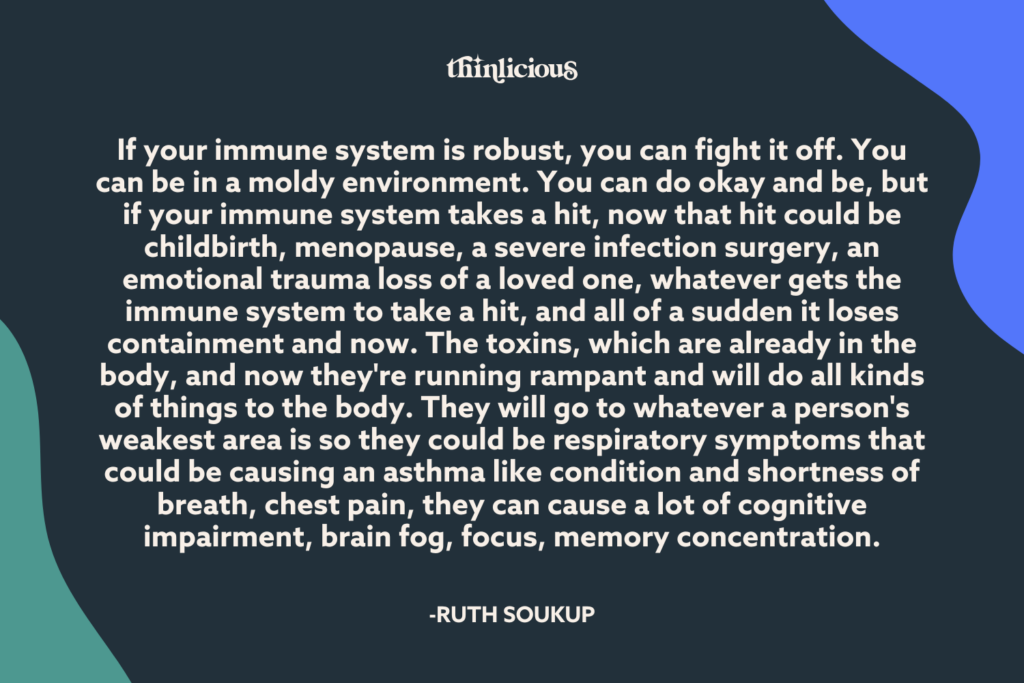
Ruth Soukup: Whoa.
Dr. Neil Nathan: Now with additional research and many years into the field, he would put it at 90%. No kidding. So a common illness that freaks people out, that decimate families, that’s horrific.
Ruth Soukup: Yeah. Might
Dr. Neil Nathan: be way more treatable than people realize because they’re not looking in the right place for the cause.
So in our patients with Alzheimer’s, for example, once again, mold toxicity and Lyme disease or major causes along with heavy metal toxicity and in women hormonal, um, hormonal deficits. So that if you address those things, a huge percentage of people who are going down the road of getting Alzheimer’s, you can turn that around either completely or.
Enough so that people really get their life back. So yeah.
Ruth Soukup: That’s amazing. So, and that’s, that’s the statistics I haven’t heard. Now I have heard that, that about the inflammation and, and, and, you know, insulin resistance and the fact that Alzheimer’s is being referred to as type three diabetes and all of that stuff.
But the mold, this, the mold thing is not a common conversation that’s happening. Why do you think that is? If it’s this common and it’s this. Prevalent in society. I mean, what you’re talking about, it’s 48% of houses, 60% of houses. That’s, that’s a lot of people. And w why so why is not, why are not more people talking about this?
Dr. Neil Nathan: A, I don’t know, B new. And we’ve really only learned about this in the last 20 years. I mean, for decades, um, we’ve. We’ve known about mold allergy. That’s that’s well known in medicine. It’s been treated for a very long time. But mold toxicity is a relatively new concept, even though it’s actually written about in the Bible.
There’s a sectional Leviticus where they talk about if someone is living in a moldy home, do everything you can to clean it up. But if you can’t burn it to the ground,
Ruth Soukup: really it’s Now I’m gonna have to go look that up. Borrows devotions. Yeah,
Dr. Neil Nathan: it’s there. Um, I don’t make up any of this stuff. It’s, it’s there.
My answer to your question is that new drugs, new technology has a huge economic thrust to push it into the public knowledge. New information is not embraced by medicine at all. I mean at all, and maybe that shocks people, but the history of all science and medicine is that if a new piece of information emerges, the first thing that the old guard does is deny that that exists.
It’s like, no, no, no. That can’t be true. That’s not possible. Then it usually takes about 20 years for a new concept to be accepted by the medical profession. When the medical profession decides that enough research has been done in this area to justify that as something where it’s studying. And so I get a lot of, when I talk with patients and other doctors, some doctors will say, well, if this was.
Valid information. They would’ve taught that to me in medical school. I’m going, yeah, I went to medical school 50 years ago. Um mm-hmm. This wasn’t on anybody’s radar at that particular point. So you’re telling me that if it wasn’t taught to you in medical school, there’s nothing new that’s coming down the pike that’s worth knowing and yet I know it sounds crazy.
That is what I get a lot of by physicians or if this was valid, they would’ve presented it to me at my yearly specialty, uh, medical update, but which was paid
Ruth Soukup: for by the pharmaceutical companies.
Dr. Neil Nathan: Nobody’s doing that.
Ruth Soukup: Yeah.
Dr. Neil Nathan: So, um, Lyme disease appeared on the, on our radar about 30, 35 years ago, and it is just now being embraced as a very real thing.
Example, it wasn’t until 2013 that the CDC officially recognized that there were 300,000 new cases of Lyme every year.
Ruth Soukup: Oh wow. So that’s
Dr. Neil Nathan: a bigger epidemic than AIDS ever was. Yeah, but they were, that’s only 13 years
Ruth Soukup: ago.
Dr. Neil Nathan: They revised that in 2023, that there’s now 675,000 new cases of Lyme every year. Wow.
So we’re talking epidemics here that are not being recognized by the medical profession. And yes, this is a travesty, but yes, this is how medical information evolves. Mm-hmm. So, um. It’s not something that people know unless you get a, an odd duck like me going on a podcast and talking about it.
Ruth Soukup: So what is the treat, what is the treatment for this stuff?
I mean, if, if, if, well, so similar is the treatment similar to.
Dr. Neil Nathan: Now, let me back, let me back up. Okay, so first of all, I only covered a couple of things on symptoms. Yeah. So in addition to cognitive impairment and respiratory symptoms, um, uh, psychological issues, anxiety, depression, OCD, you name it. Um. Every type of gastrointestinal symptom possible.
A gas, bloating, distension, diarrhea, constipation, abdominal pain, neurological symptoms, peripheral neuropathy, um, visual disturbances, uh, literally almost any part of the body that you can imagine can be affected by mold toxicity. Okay, so just it’s so much that. Many physicians, if you walk in and you give them your list of symptoms, their first thing is nothing causes all of that.
So this has gotta be in your head. But the answer is no, it’s not. This is, this is not that at all. Now, this is not hard to diagnose, okay? There’s a very simple urine test where you can collect your urine, mail it to any of several laboratories. They can test that for you and. Tell you whether there’s mold toxin in your urine.
It’s really simple. If there is,
Ruth Soukup: you don’t even need a prescription for it. You can just request it.
Dr. Neil Nathan: The test that I think is the most accurate is the real time test, which is covered by Medicare, for example. Oh, so it’s not even that expensive. So yes, you can get a simple urine test and know that this mold is in your body.
Not only will we know that it’s there, but we will actually know which mold toxins, ’cause there’s dozens of them. We’ll know which ones are there. Based on which ones we see there. We also know that there are specific, we’ll call them binders that are materials you can take to pull those toxins out of the body.
And those are some simple things like charcoal, bentonite, clay, um, chlorella, sacro, mises, burlar. There’s also some medications which are helpful in that particular regard and. One minor other piece of information. If someone is in a moldy environment for a long period of time, it will colonize in that person’s body, meaning it will start to grow and their sinus or gut areas.
So a lot of what are thought of as bacterial sinus infections are not. That was figured out by the Mayo Clinic in 1999 that what people were calling bacterial sinus infections. And there are some, largely the chronic ones were, were mold.
Ruth Soukup: Interesting. And
Dr. Neil Nathan: so again, uh, these are things that the medical profession is slowly embracing, but.
The unfortunate word there is slowly.
Ruth Soukup: Yeah.
Dr. Neil Nathan: So we do know how to diagnose it. We do know how to treat it and. From your audience. Um, one of the things that both mold toxicity and Lyme disease do is they affect the pituitary’s ability to balance our hormones. So almost any hormonal imbalance may have either a mold or Lyme cause to it.
So you could try to balance these hormones and if you’re having trouble doing it, it may be ’cause you’re not fixing what’s messing it up in the first place.
Ruth Soukup: That’s good to know. Yeah, because I think I see that a lot with my clients, right? When they start changing the way they eat, and that helps to some extent, but then they’re still struggling with like, I’m doing all the things right?
I’m eating all the right things. I’ve been doing this for a while. I’m still not dropping the weight. What you’re saying is this could be right, a mold issue on top of. Insulin resistance and poor gut health. Probably the mold issue is contributing to the poor gut health sounds like.
Dr. Neil Nathan: Exactly, and in functional medicine, the rule of starting is you start with the gut and fix it so everything else can follow.
Ruth Soukup: The
Dr. Neil Nathan: exception to that is mold toxicity. If you have mold toxicity, you will not be able to successfully fix the gut until you get the mold out of there.
Ruth Soukup: Yeah, that makes sense. And
Dr. Neil Nathan: these are things that not a lot of people know, but should, but.
Ruth Soukup: Yeah, no, nobody, I mean, I talk about this stuff every day and this is, this is new information, so, so you’re saying the way that you treat the mold depends on the type of mold that it is.
So in order to find out what type of mold toxicity you might have, do the urine test and there’s a test that you can take or you can order it and we will, can we link to that in the show notes? The, the one that you recommend? Yes. So that people, I’m taking the test. I wanna know this is, uh, this is in, this is incredible.
Yeah. And so is the treatment then, what is the treatment for Lyme disease? Is it similar to
Dr. Neil Nathan: that’s, no, that’s completely different. Completely different. So even though the
Ruth Soukup: symptoms are similar and they present similar, it’s totally different treatments. Exactly. So how do you know which one is which? Just the testing.
Dr. Neil Nathan: We have tests that will distinguish them. So there are, again, laboratory tests for Lyme disease. Now, some of the routine tests for Lyme that you might get from LabCorp or Quest or from your local hospital are really, really lousy tests. Um, I, I could go into detail why that’s the case, but there are specialty labs that do a much, much, much, much better job.
Okay. The simple answer to that is when these tests were first developed, we only knew that there was one kind of Lyme bacteria, which is technically called Borrelia burgdorferi, right? So all of those tests that are in common use were developed solely for that species. Unfortunately, as we’ve evolved here, we know that there are 30 plus species of Lyme disease.
Oh wow. And that if you only are testing for the burgdorferi, you’re gonna miss it a lot. So the newer tests, hygienics, for example, is a laboratory that is particularly, uh, pioneered this work so that they will test for dozens of species of. Of Lyme, which is technically Borrelia, so that, um, you will miss it with Quest or lab.
90 plus percent of the time. And so many, many people who thought they had Lyme disease, they were bitten by a tick, they had a rash, they got sick. They’ll go in, they’ll get tested for it, and they’ll say, now you test negative, you didn’t get the right test.
Ruth Soukup: Mm-hmm.
Dr. Neil Nathan: So, um, it’s important that people know that there are better tests than others.
And again, Lyme is completely different because it is a bacteria.
Ruth Soukup: Right, and
Dr. Neil Nathan: it’s much more complicated than that. I don’t know how much you want me to get into it, but when you’re bitten by a tick, it injects the contents of its stomach into you. And if they, it’s not just the Lyme bacteria in there, but there’s other bacteria that they inject also, uh, Bartonella, Oria, and a plasma, some viruses and a parasite called Babesia.
So it’s Lyme disease isn’t just this simple bacterial infection. It’s this mishmash of whatever the Tick had in it. When it bit you. But these require a different approach. ’cause these are infectious agents, so they require antibiotics of different types. Uh, they require herbal supplementation of different types.
We have to improve people’s ability to detoxify from killing these various organisms. So forgive me, it’s a little bit complicated. Um, but there’s a whole group of physicians that are trained now to do this. They’re not the ones you’re gonna meet in the emergency room. They’re not the ones that are gonna be your family doc.
So, um, be careful if you think you were bitten by a tick and we’re told, oh, I checked you and you’re fine. Oh, I doubt it.
Ruth Soukup: Yeah. Like, be willing to advocate for yourself. I think it, it always comes back to that. Yes. Get a second opinion, get a third opinion. Do the research. What on, on who you might need to talk to.
I mean, that’s how people are finding you, right? They’re read, they’re reading your book, they’re going, this person understands what I’m talking about. And I think that’s so true and I, I, I see that a lot and you know, just friends who are dealing with different things is that sometimes they’re just not, and they just accept that first diagnosis, oh, my doctor said this, and they take it at face value.
And I, I. That’s not my personality. So I’m like, no, come on, let’s, let’s do a little more research. Let’s figure this out. Let’s go, let’s ask somebody else and, and, and look into this a little bit deeper. But you have to, you have to advocate for yourself or no one else is gonna do that for you. I do have a question though.
About, I don’t know if this is something that you see a lot too, but I have been seeing a lot. I, I’m on X quite a bit or what, formerly known as Twitter and, and I think I get a lot of alternative health things. My algorithm is trained to give me a lot of alternative health things and so. I see a lot about parasites.
How does that play into any of this? Like are you on the parasite band bandwagon, do you think? ’cause according to, according to what? To half the people on X, everything that is making us sick is parasites. Have you heard this at all? And um, I don’t know that I believe, I do fully believe that. But I am curious to know, like your thoughts, especially given your.
Your breadth and depth of, of knowledge on kind of the, the problems that other people are be able to fix what you’ve seen with that?
Dr. Neil Nathan: That’s a very complicated question. Um, I have colleagues who see and treat parasites much more often than I do.
Ruth Soukup: Mm-hmm.
Dr. Neil Nathan: I’ve been aware of it for my whole 50 years of practice.
The problem is the test that is available sucks. It’s, it just won’t pick them up. But I have, when I thought it was even possible that people had parasites, I have treated them aggressively for it, and rarely has that been helpful in my experience. So I, but keep in mind. Patients find us energetically. I don’t know or understand how that happens, but the people who come to me somehow have a sense that I can help them and they will have a particular, um.
Makeup that allows me to help them. And so I call that water seeking its own level. Yeah. Whoever blames me, I can probably help. Yeah. Don’t know how that happens, but
Ruth Soukup: Yeah. Well, I think it happens when, you know, as you’re describing those symptoms and you’re describing the people that you are helping, that they hear themselves in that.
Right. And I’m sure there are people listening right now who are, who have heard themselves in everything that you’ve described, whereas other people are like, oh, this is interesting, you know. And there’s gonna be those few. And, and, and that is, that is why, why you come on here, why you talk to it, why you wanna get that out there so that, so that the right people can find can find the right answer.
That’s why we do these episodes. But yeah, this is just so interesting.
Dr. Neil Nathan: The people who seek me have not been. Particularly high in parasites. I’ve treated a few throughout my career, but I don’t see it a lot. I have other colleagues who I deeply respect who see it a lot more than I do and think it’s a lot more common.
So yeah, I think the answer to your question is the truth lies somewhere in the middle here. Um, probably it is underdiagnosed. It isn’t treated as much. Is it the major cause of everything going on in this world? Absolutely not.
Ruth Soukup: Okay. Good to know. So you wouldn’t recommend then, based on your experience doing a, a proactive parasite cleanse?
That’s not, that’s taking it a little far. I,
Dr. Neil Nathan: I have done that on countless patients over the years, and in my perception, it has not helped almost anyone. But I did it even on myself at one point.
Ruth Soukup: You did.
Dr. Neil Nathan: I did. So, no, I don’t think that we all need to be doing that. I, I think there’s potential harm to doing that.
Um, so I, it doesn’t make sense to me to just assume that we all have parasites because honestly, I, I don’t believe that’s the case.
Ruth Soukup: Interesting. Interesting. Well, Dr. Nathan, this was all very, very interesting and I just am so grateful to you for coming on. Um, before we wrap up, I would love to know, first of all, is there anything else that you think that we need to know that we didn’t cover?
And second. Where can we find out more? Where can we get your books? All of, of course we will link to everything in the show notes, but I’d just love to know how we can get more information and for anybody who was, who was listening and just was like hearing themselves as you spoke, I would love to know how they can follow up.
Dr. Neil Nathan: Okay. Well. I have a whole bunch of books that I’ve written. Um, one book that would cover this subject is my book called Toxic. Um, it’s subtitled Heal Your Body for mold toxicity, Lyme disease, multiple Chemical Sensitivity, and other environmental, um, exposures. Um. That book’s been a bestseller and, um, we’re gonna have a second edition out this summer.
I’ve written seven new chapters and updated the information, but that book would probably be a good place to start. Um. For people who have become unusually sensitive, where they can’t take medications or supplements or things like others can, or they’re more and more sensitive to smells, chemicals, or light.
My new book is called The Sensitive Patient’s Healing Guide, and it goes into. What’s causing all of that and from knowing the causes, how to treat that. So those things are now much more treatable. Um, I do have a website, which is simply neilnathanmd.com. Um, and I do do consultations with, uh, patients and their primary treating physician if, um.
People need me to. So, um,
Ruth Soukup: that’s great. That’s great to know.
Dr. Neil Nathan: I, I’m, I’m out there somewhere. There’s, I, I’ve got dozens and dozens and dozens of podcasts out there in the, in cyberspace somewhere.
Ruth Soukup: And people find you and awesome. I love it. So of course, like I said, we will link to all of those resources in the show notes as well as the urine test that you recommended.
So if anybody wants to test their urine the way that I do to find out whether or not you have mold toxicity, um, you’ll be able to do that as well. Um, again, Dr. Nathan Neil, thank you so much for joining me today. This was fantastic information and I just appreciate you.
Dr. Neil Nathan: Thank you for having me.
What if you could actually take control of
your health in just 10 days?
It’s not your fault you can’t lose weight as a woman over 40 even though you’ve likely tried literally everything. Your metabolism probably feels broken and your hormones are likely all out of whack.
But you can fix it all with ONE simple change: eliminate sugar. We make it super easy with daily lessons teaching you the science behind what makes us gain weight in our midlife and beyond! Are you ready to get started now?

